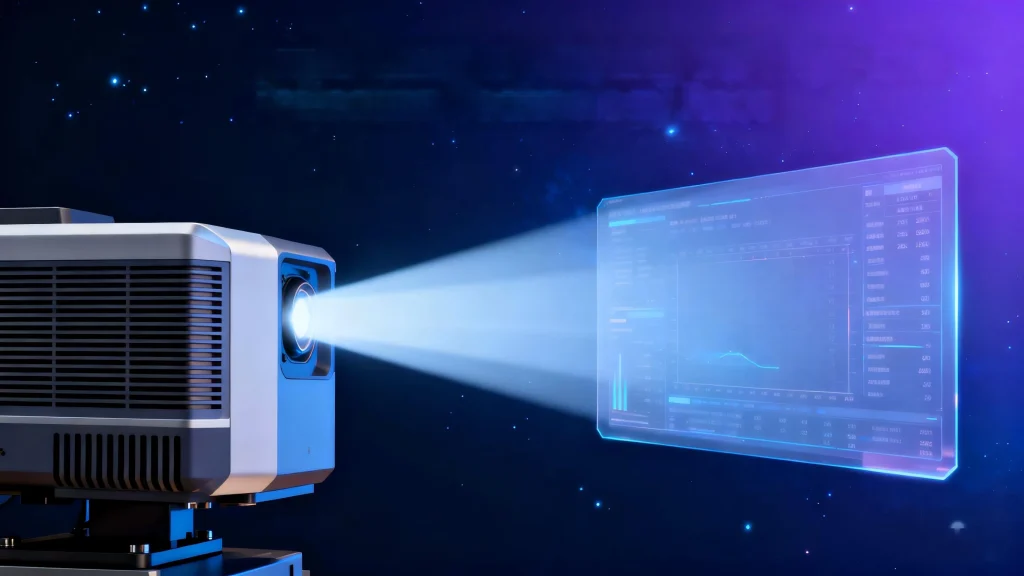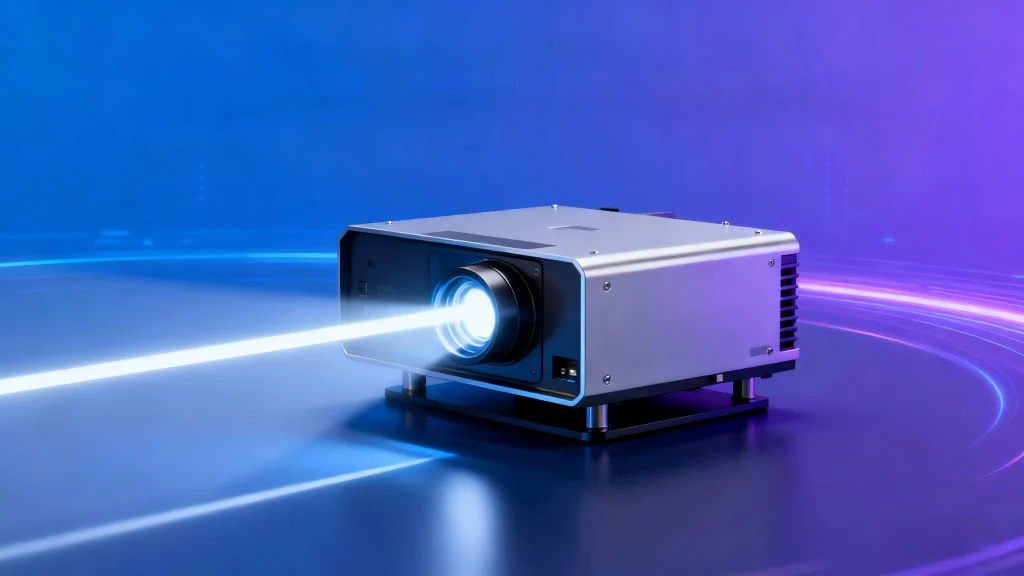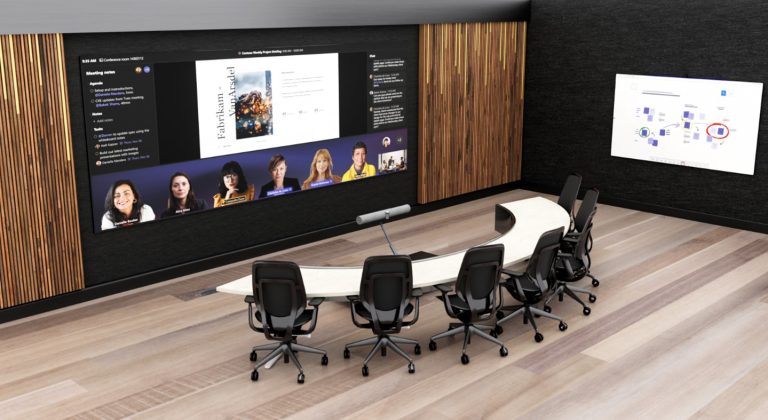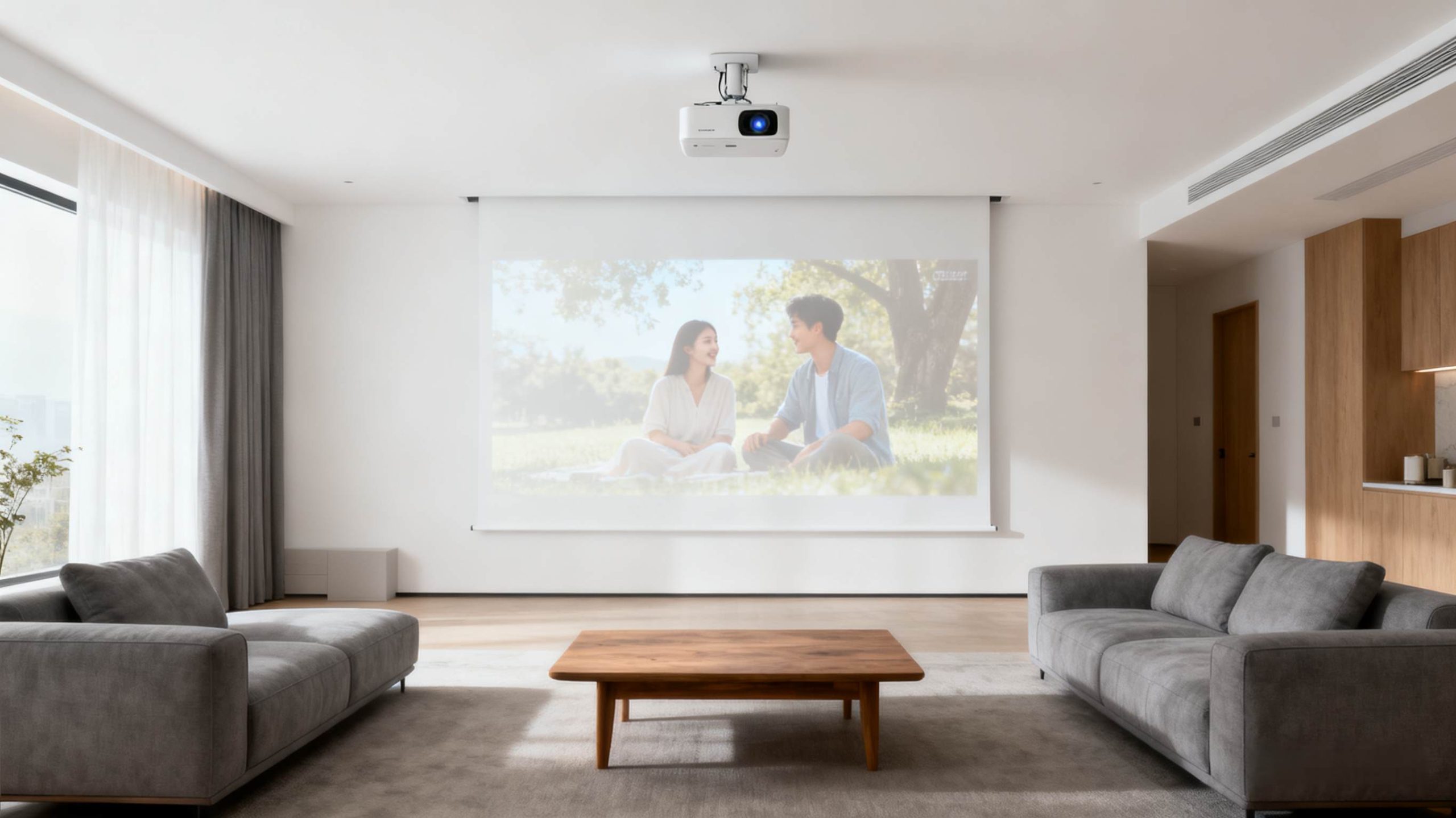
In the world of modern visual displays, top-tier projection systems keep advancing. They push limits for sharpness and ease. Ultra short throw triple laser projectors head this push. They provide smooth fits into current rooms. Traditional models often fail here. These units cast big, bright pictures from just inches off. They change homes, workplaces, and schools. This review looks at the pushes behind their climb. It draws on field stats. It shows why they rule the upscale area. As calls grow for deep, room-saving answers, grasping this tech turns key for folks hunting the fresh surge in projection.
Understanding Ultra Short Throw Triple Laser Technology
Ultra short throw triple laser projectors mix two main breakthroughs: a tiny projection gap and a refined light maker. Set mere inches from the wall or panel, they throw images up to 100 inches or bigger. No need for roof hooks or lengthy wires. This setup works well in snug spots, like flats or meeting rooms. Space matters a lot there.
How Ultra Short Throw Triple Laser Works
The setup counts on three focused lasers—red, green, and blue—for light creation. Each laser sends out a clean color ray. Optics mix them into a complete range. Digital light handling chips adjust these rays to build the picture. The ultra short throw part stems from special lenses. They curve light sharply. This lets close spots without twists. For instance, a throw rate under 0.4:1 gives a 100-inch view from below 10 inches off. It cuts out shades from folks walking by. That’s a usual snag with normal projectors. Builders have sharpened this via exact lineup of lasers and reflectors. They make sure light spreads even across the show.
Advantages Over Traditional Projection Technologies
Next to bulb-driven or lone-laser setups, ultra short throw triple laser shines in key spots. Life span hits 30,000 hours. That towers over the 5,000 hours of old bulbs. So, it lowers swaps in active places like colleges. Color truth reaches 100% of the Rec.2020 span. It brings richer darks and whiter lights for true-to-life sights. Glow often beats 3,000 lumens. It stands firm in bright areas without fading.
Power draw falls as well. Lasers pull less juice for the same shine. In a movie room case, watchers get 4K detail without blower sound drowning soft parts. No hue wheels mean less machine breaks and no color flashes that bug prior DLP gear. These points render the tech steady for routine tasks, from playing films to showing info graphs.
Current Market Trends in High-End Projection
The upscale projection field leans to small, strong choices as ways of life move to tinier homes. Ultra short throw triple laser matches this shift. It joins ease with might. Buyers like arrangements that copy flat TVs but grow larger. No wall-hang troubles.
- Growing home use: Kin turn to these for special film spots. They beam onto walls for bendy watching.
- Work blend: Firms employ them for team areas. Fast prep helps mixed gatherings.
- School changes: Lessons gain from active screens that pull in pupils without chunky tools.
Take-up in Asia-Pacific jumps, pushed by city crowds. North America notes rise in fancy home fun. Shifts aim at brighter traits, like self-angle fix, boosting user comfort.
Growth Drivers and Market Projections
Calls for top picture grade spark the ultra short throw triple laser field. As 4K stuff spreads on stream sites, projectors need to match crisp bits. Price drops in laser parts—off 20% lately—render these reachable past small groups.
Stats from QYResearch peg the world field at US$ 348 million in 2024. It aims for US$ 604 million by 2031. That’s with a CAGR of 8.2% from 2025 to 2031. This swell comes from uses in house and trade parts. By kind, 4K types lead. They give theater-level clearness. Meanwhile, 1080P aids cost-mindful folks.
By area, Asia-Pacific tops from build centers and tech hunger. North America trails, with stress on fun boosts.
Region | 2024 Market Size (US$ Million) | Projected 2031 Size (US$ Million) | CAGR (%) |
North America | Estimated segment share | Projected growth | 8.0 (approx.) |
Asia-Pacific | Leading portion | Highest projection | 8.5 (approx.) |
Europe | Steady base | Moderate increase | 7.8 (approx.) |
These guesses, pulled from full studies, mirror wider drives for green tech. Lasers’ thrift fits power rules. It pulls in earth-smart shoppers. In a firm switch to these projectors, one outfit cut electric tabs by 40% across a year. At the same time, it lifted talk punch.
Challenges and Opportunities in the Market
High initial costs pose a hurdle; premium units can exceed $2,000, limiting entry in developing regions. Supply chains for laser diodes face occasional disruptions from material shortages.
Opportunities emerge in expanding sectors. Integration with AR for virtual demos opens doors in training and design. Think architects projecting life-size models in small studios—the close throw enables this without rearranging furniture. As prices fall with volume production, market penetration deepens.
By 2028, experts predict ultra short throw triple laser could claim 25% of high-end sales, capitalizing on these dynamics. Balancing costs with features will key future success.
Real-World Applications of Ultra Short Throw Triple Laser Technology
These projectors excel across scenarios. In homes, they create wall-filling screens for sports events, with vibrant colors capturing every play. A family might mount one on a console table, projecting 120 inches without shadowing during gatherings.
Commercial uses shine in retail, where stores display promotions on walls, drawing eyes without floor space loss. One boutique reported 30% more foot traffic after installing for dynamic ads.
Education thrives too. Teachers project interactive maps in cramped classrooms, letting kids annotate without obstruction. Durability handles daily rigors, from morning lessons to after-school clubs.
In events, like conferences, setup takes minutes, delivering crisp slides in varied lighting. This versatility cements their role in modern visuals.
Toumei: Pioneering Triple Laser Solutions

Shenzhen Toumei Technology Co., Ltd. stands at the forefront as a dedicated supplier of triple laser projection systems. Founded in 2013, the company has built a reputation on Texas Instruments’ DLP micromirror tech, blending over a decade of R&D with hands-on production. With more than 50 patents under its belt, Toumei crafts OEM and ODM solutions that hit high marks in brightness, resolution, and customization.
Their lineup includes compact 4K units reaching 3,000 lumens, tailored for pro and home use. Monthly output tops 20,000 units from a streamlined line in Shenzhen, ensuring quick turns on custom orders—like swapping OS for regional markets or tweaking optics for event rigs. Quality runs deep: Every engine undergoes thermal stress tests, guaranteeing 30,000-hour reliability. Partners value the flexibility—start with a prototype engine, scale to full branding. Toumei’s focus on light efficiency and low power aligns perfectly with triple laser’s strengths, helping clients deliver standout visuals without the hassle.
Conclusion
Ultra short throw triple laser projectors remake upscale projection with their mix of nearness, exactness, and show. Field numbers hint at lasting spread, sparked by handy pluses and tech steps. This locks their front in a rival spot, vowing better times ahead.
FAQs
What does market analysis reveal about the ultra short throw triple laser projector sector?
Market analysis shows the global ultra short throw triple laser projector sector valued at US$ 348 million in 2024. It is projected to grow to US$ 604 million by 2031. This happens at an 8.2% CAGR. Demand in home and commercial applications fuels it.
Why is the ultra short throw triple laser projector winning the high-end projection technology race?
The ultra short throw triple laser projector wins the high-end projection technology race through top color truth, lengthy life, and room-saving build. It beats old systems in thrift and picture grade.
What key growth drivers influence the ultra short throw triple laser projector market?
Growth drivers for the ultra short throw triple laser projector market include dropping part prices. Rising 4K content needs play a role too. So do uses in packed city spots.
How does ultra short throw triple laser technology stack up against other methods?
Ultra short throw triple laser technology tops others with tiny throw gaps. It cuts twists and shades. This makes it great for tight places.
What trends should watchers track in the ultra short throw triple laser projector market?
Trends in the ultra short throw triple laser projector market include AR mixes and brighter traits. Growth looks set across areas through 2031.




